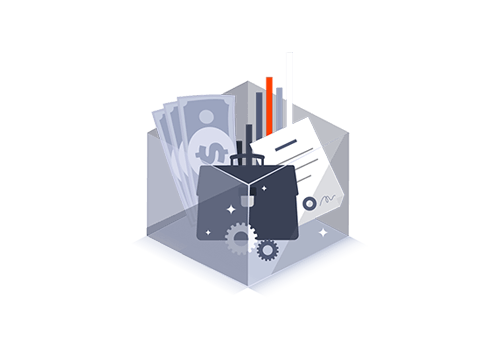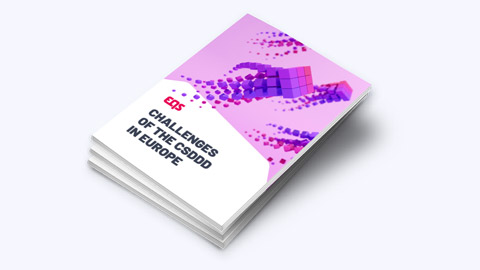How Unconscious Bias Affects Your Speak-up Arrangements
Guest author Nichole Pitts raises awareness of potential biases in the compliance program and shows how they can be overcome.

Have you ever visited the opticians to have your vision checked and were told you needed glasses? You may not have realised that you needed them at the time, but you immediately noticed how much clearer everything was once you got them. That is what happens when you become aware of your own unconscious bias. You see behaviours and attitudes that you were previously oblivious to.
How compliance programs are affected by bias
Ethics and Compliance programs are more effective and appreciated when they consider the diverse culture of their workforce. Historically, compliance programs have focused on ticking the boxes in the guidance provided by various government entities (i.e., the US Department of Justice or the forthcoming EU Whistleblowing Directive). This prescriptive approach typically strives to mitigate risk with one set of policies and procedures that apply to their operations worldwide. These policies generally have been written by lawyers with language to protect the company. They are focused more on reducing risk from a legal perspective than explaining the company expectations in simple terms that can be understood across multiple languages and education levels.
Diversity and Inclusion can improve the efficacy and understanding of your compliance program by identifying and managing unconscious bias in the reporting process. So, what is unconscious bias? In short, it’s a tendency to mentally lean in a certain direction.
Bias is not necessarily a bad thing; the problems occur when a bias affects someone positively or negatively and creates an unfair advantage or disadvantage (such as affecting decisions about performance and discipline).
Most of us feel like we (and our compliance programs) are generally fair and impartial. However, bias creeps in to affect our judgement and decision-making process in ways in which we are unaware. This can show up in how we perceive a raised concern and how we react towards certain people or groups.
Speak-up helpline: 4 types of unconscious bias
Four common types of unconscious bias could come into play with regard to the speak-up Helpline. These biases arise when people think about reporting suspected misconduct to how the concern is investigated and resolved where there could be a perception of inequitable outcomes.
- Conformity Bias – This bias focuses on obtaining “group think.” Suppose individuals feel their leadership or a majority of the group are engaging in a particular behaviour that may or may not be unethical. In that case, they may tend to go along with the group rather than challenge or report concerns out of fear of retaliation or being perceived negatively by the group.
- Affinity Bias – This bias occurs when we feel a shared connection with someone based upon similar backgrounds (i.e., attended the same university). Affinity bias affords a privilege that could inadvertently cause the investigator to look more kindly upon the reported individual and excuse behaviour out of a sense of kinship. It could also cause someone to refrain from reporting an issue for fear that the concern will not be investigated adequately due to a perception of camaraderie between the compliance department and the reported individual.
- Halo and Horns Effect – The Halo bias is our tendency to assume everything about a person is good because our first impression of them was good. Conversely, the Horns bias is when we have one bad experience with a person, and we let it cloud our opinion of them. It’s like the saying, “you never get a second chance to make a first impression.” The risk is that this bias could creep in when investigating a report. For example, if someone is viewed negatively by certain members of management, there could be a tendency to discount the veracity of their information. Alternatively, suppose a well-liked individual is named in a report. In that case, there could be the tendency to dismiss the concern because the investigator feels they “know” that person and doesn’t believe they would engage in unethical behaviour.
- Confirmation Bias – This bias focuses on our inclination to draw conclusions about a situation or person based upon our personal beliefs or prejudices. This could lead us to seek evidence to support our initial perception while ignoring contrary information in order to prove we’ve made the correct assessment of a person. This bias can show in both the reporter and the investigator.
While we cannot eliminate all bias, we can become aware of how we may unintentionally (dis)advantage others through policies and behaviour, then take proactive measures to address it.
Top tips to manage bias in your compliance program
What can you do to help manage bias in your compliance program, speak-up Helpline, and investigative process?
- Listen – Pay attention to what others have to say. Be open-minded and refrain from interrupting.
- Develop “Cultural Competency” – This is the ability to interact effectively with people of different cultures and backgrounds. Pay attention to the reaction you have when you meet someone new.
- Educate yourself – Read up on the topic of implicit and explicit bias.
- Point out bias when you observe it—both in the investigation and disciplinary process.
- Practice “Workplace Sensitivity” – This involves being aware of and respecting other’s differences and comfort levels. Every individual has their own sensitivity to comments and behaviours. While one person might not be bothered by a comment, someone else may find that same comment highly offensive. It’s important to be mindful of the comfort levels of others. This is especially important to keep in mind as you are conducting interviews to gather the facts of the report.
- Be open to changing your mind – Just because you have held a certain opinion for years doesn’t mean it can’t change based upon new information. View it from an updated lens – just like a new pair of glasses.
On the Oprah Winfrey Show finale, Oprah was asked why her show was so successful, and she said something that really resonated with me, and I think it goes to the heart of why diversity and inclusion is important to company speak-up Helplines. “At the end of the day, everyone wants to know: ‘Do you see me? Do you hear me? Does what I say mean anything to you?’” By being open about the need to identify and manage unconscious bias in your program, you create more equity and belonging. This, in turn, increases awareness of your policies and trust in your program.

Key principles of establishing an effective ABC programme



